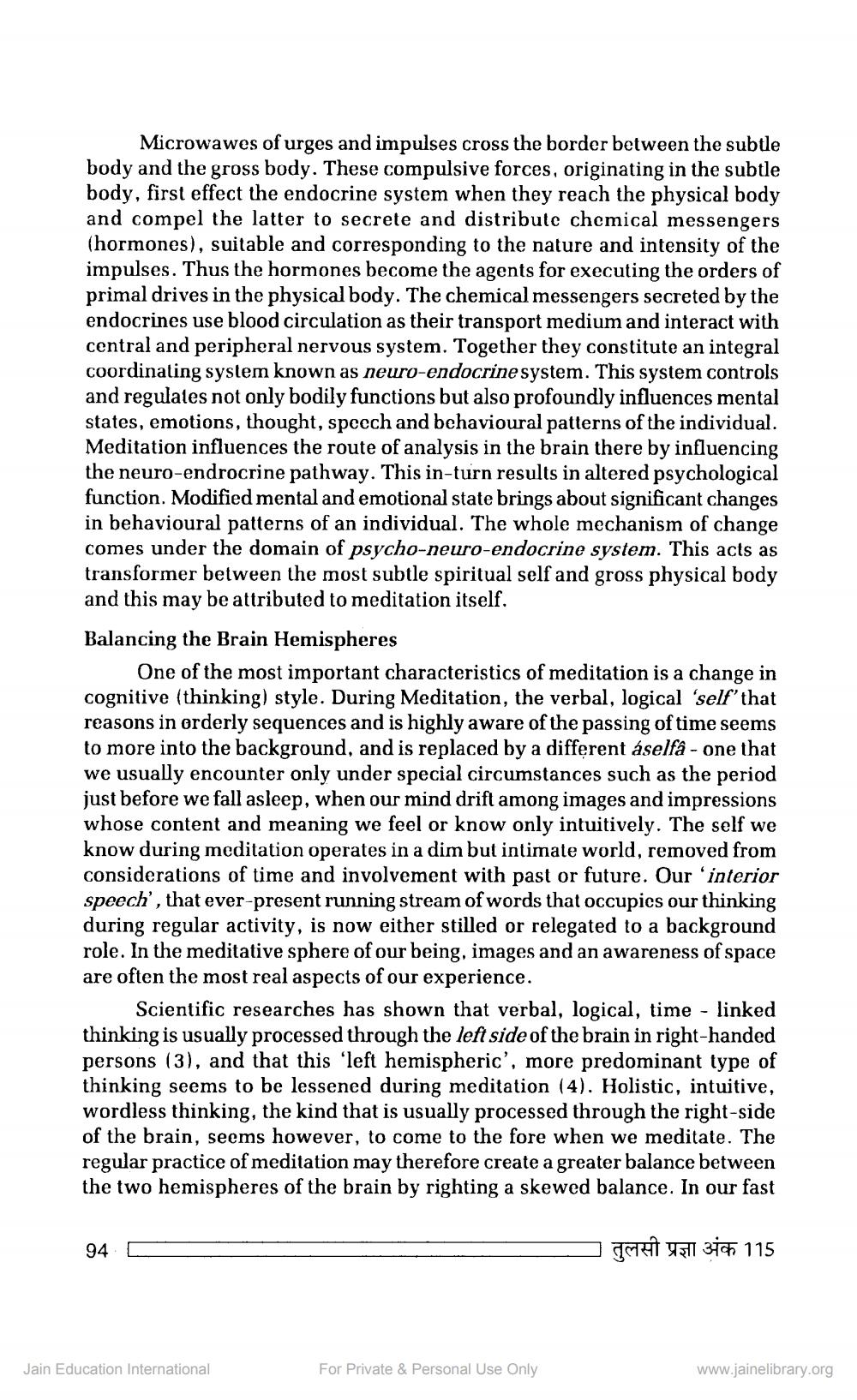________________
Microwawes of urges and impulses cross the border between the subtle body and the gross body. These compulsive forces, originating in the subtle body, first effect the endocrine system when they reach the physical body and compel the latter to secrete and distribute chemical messengers (hormones), suitable and corresponding to the nature and intensity of the impulses. Thus the hormones become the agents for executing the orders of primal drives in the physical body. The chemical messengers secreted by the endocrines use blood circulation as their transport medium and interact with central and peripheral nervous system. Together they constitute an integral coordinating system known as neuro-endocrine system. This system controls and regulates not only bodily functions but also profoundly influences mental states, emotions, thought, speech and behavioural patterns of the individual. Meditation influences the route of analysis in the brain there by influencing the neuro-endrocrine pathway. This in-turn results in altered psychological function. Modified mental and emotional state brings about significant changes in behavioural patterns of an individual. The whole mechanism of change comes under the domain of psycho-neuro-endocrine system. This acts as transformer between the most subtle spiritual self and gross physical body and this may be attributed to meditation itself.
Balancing the Brain Hemispheres
One of the most important characteristics of meditation is a change in cognitive (thinking) style. During Meditation, the verbal, logical 'self' that reasons in orderly sequences and is highly aware of the passing of time seems to more into the background, and is replaced by a different áselfâ - one that we usually encounter only under special circumstances such as the period just before we fall asleep, when our mind drift among images and impressions whose content and meaning we feel or know only intuitively. The self we know during meditation operates in a dim but intimate world, removed from considerations of time and involvement with past or future. Our 'interior speech', that ever-present running stream of words that occupies our thinking during regular activity, is now either stilled or relegated to a background role. In the meditative sphere of our being, images and an awareness of space are often the most real aspects of our experience.
Scientific researches has shown that verbal, logical, time - linked thinking is usually processed through the left side of the brain in right-handed persons (3), and that this 'left hemispheric', more predominant type of thinking seems to be lessened during meditation (4). Holistic, intuitive, wordless thinking, the kind that is usually processed through the right-side of the brain, seems however, to come to the fore when we meditate. The regular practice of meditation may therefore create a greater balance between the two hemispheres of the brain by righting a skewed balance. In our fast
94
C
da
uzul 310h 115
Jain Education International
For Private & Personal Use Only
www.jainelibrary.org




